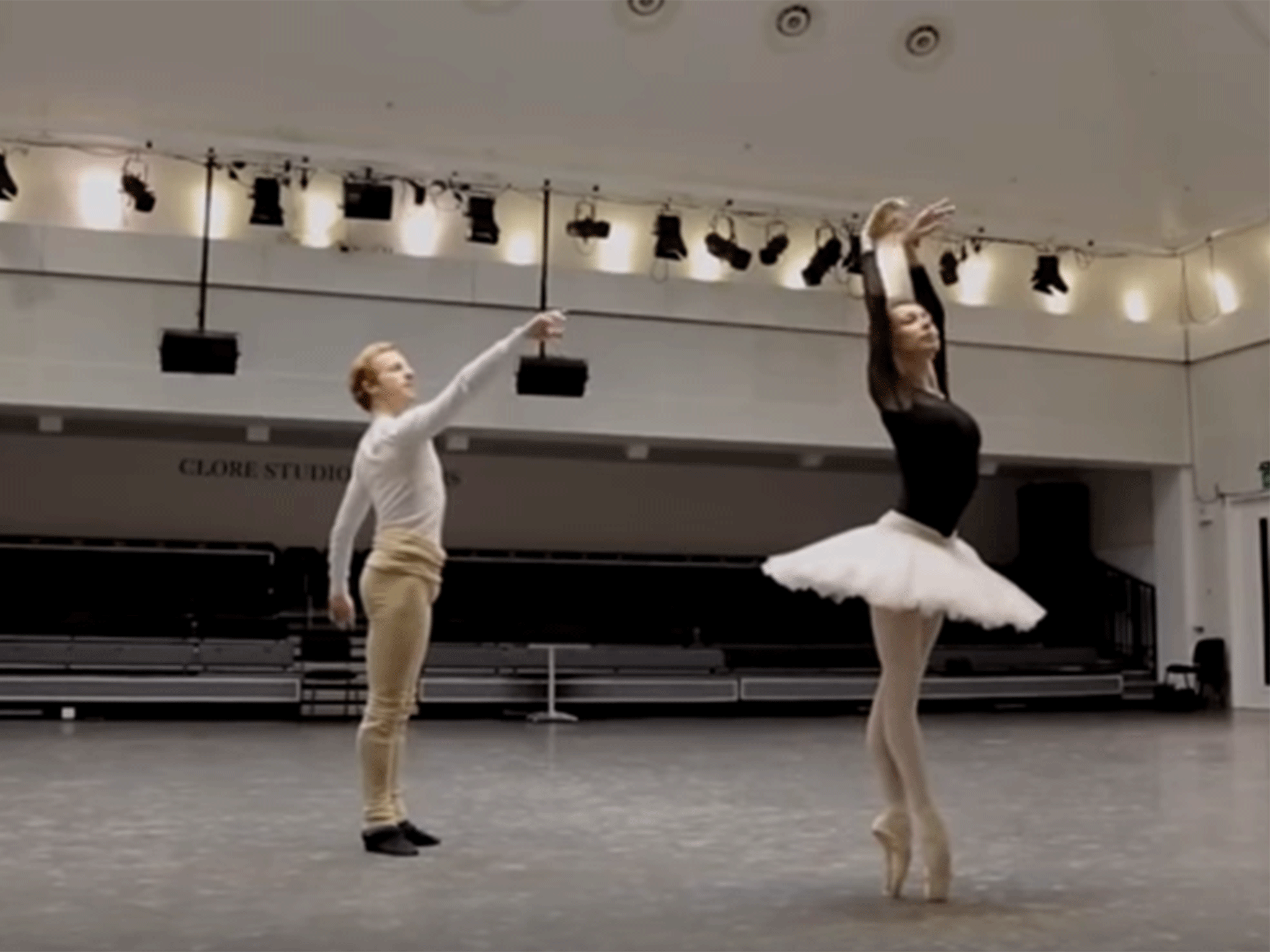The Royal Ballet's star duo reveal how they've become the best pairing in years
The red-haired stars Steven McRae and Iana Salenko praise each other in an exclusive interview at their rehearsal

Iana Salenko and Steven McRae look as if they might have been separated at birth – and not just because they share the same shade of red-gold hair. These star dancers, performing many of their leading roles together this season with the Royal Ballet, are blessed with proportions that match wonderfully; beyond that, so does their dancing. Both possess unquenchable technical strength, with a clean-cut purity of line, precision of detail, and soaring jumps that thrill with a joyous, open-hearted energy.
I’m lucky enough to watch them rehearse George Balanchine’s Tchaikovsky Pas de Deux, which they dance in the Royal Ballet’s cinema relay on 12 November, shown live in more than 1,500 cinemas around the world. They are being coached in its virtuoso challenges by Patricia Neary, a star of the great choreographer’s New York City Ballet in the Sixties. At one point she dissects a complex pattern of footwork in leaping turns that Salenko must execute, involving a linking step that travels further than expected. Salenko masters it in one go. Neary praises her: “Your technique is so strong that it doesn’t even affect you.” As for the partnership, there’s no friction at all. The session is demanding, yet feels unusually relaxed, with smiles and laughter all round. “I can’t wait to see this on stage,” Neary exclaims at the end. “It’s going to be so exciting.”
Even over post-rehearsal tea Salenko and McRae’s outlooks streamline into one: positive, sensible and with wit always at the ready. He speaks with strong traces of an Australian accent; hers is pure Ukrainian; but they still finish each other’s paragraphs.
“The most important thing is the connection with a partner, how we understand each other,” says Salenko. “And then it’s the body and proportions. We are similar size: perfect.” McRae remarks that a photo of them in Don Quixote, showed everything: “We were in exactly the same line and even our facial expressions were the same,” he says. “It’s not something we talk about; it just happens naturally. It’s obvious that it works.”
They first encountered each other around seven years ago, their complementary looks drawing comments from the outset. “People would say, ‘Oh, you look similar, you should dance together,” Salenko recounts. “But it never worked out,” adds McRae. When Alina Cojocaru, who was to have danced Carlos Acosta’s production of Don Quixote with McRae, left to join English National Ballet, Salenko was drafted in to replace her. “At our first rehearsal, for me it was comfortable right away,” McRae says. “For me, too,” Salenko smiles.
Their origins could scarcely be more different. McRae, 29, grew up in the Sydney suburbs; his father was a drag racer and he started off with dance loyalties divided between ballet and tap. Salenko, 32, did not begin ballet lessons until the age of 12 – very late in dance terms – yet such was her determination that only four years later she was performing principal roles.
Even so, occasional similarities in their experiences do emerge. Salenko left home at 14 to study at the Pisarev Ballet School in Donetsk, and was astounded to find its director, Vadim Pisarev, pulling her into the company at only 15. McRae moved to London overnight, aged 17, after winning the Prix de Lausanne and being given a scholarship to the Royal Ballet School on the spot. He had barely been in the UK for a day when he found himself whisked on stage as an extra in The Sleeping Beauty.
“I’d never even seen a ballet live before, only videos – and there I was holding this tray while Darcey Bussell was dancing Princess Aurora,” he says. It took him a while to find his feet in London – “I felt quite lost for about a year,” he admits – but once in the company he flew through the ranks to become one of its best-loved male stars.
Salenko moved to Germany after meeting her husband, the dancer Marian Walter; they are both principals in the Berlin State Ballet and have a seven-year-old son. McRae is married to the Royal Ballet soloist Elizabeth Harrod; they have a 10-month-old daughter. “Even the fact that Iana and I are both parents can help us in working together,” he says. “If I come in exhausted, saying ‘she cried all night’, Iana understands and it’s fine. And I understand now how hard it is for her to be away from her family.”
She says, with some wistfulness, “I would love to be in the Royal Ballet,” but adds that her family commitments in Berlin would make a wholesale move impossible. Nevertheless, alongside Tchaikovsky Pas de Deux she and McRae will dance two performances of Romeo and Juliet in November, perform on opening night of The Nutcracker, then tackle Giselle in the new year. Happily for the audience, they seem to have found a way to enjoy the best of both worlds.
Iana Salenko and Steven McRae dance ‘Tchaikovsky Pas de Deux’ on 6 & 12 November including live cinema relay on 12 November, ‘Romeo and Juliet’ on 3 & 23 November, and ‘The Nutcracker’ from 8 December, Royal Opera House (020 7304 4000)
Subscribe to Independent Premium to bookmark this article
Want to bookmark your favourite articles and stories to read or reference later? Start your Independent Premium subscription today.

Join our commenting forum
Join thought-provoking conversations, follow other Independent readers and see their replies